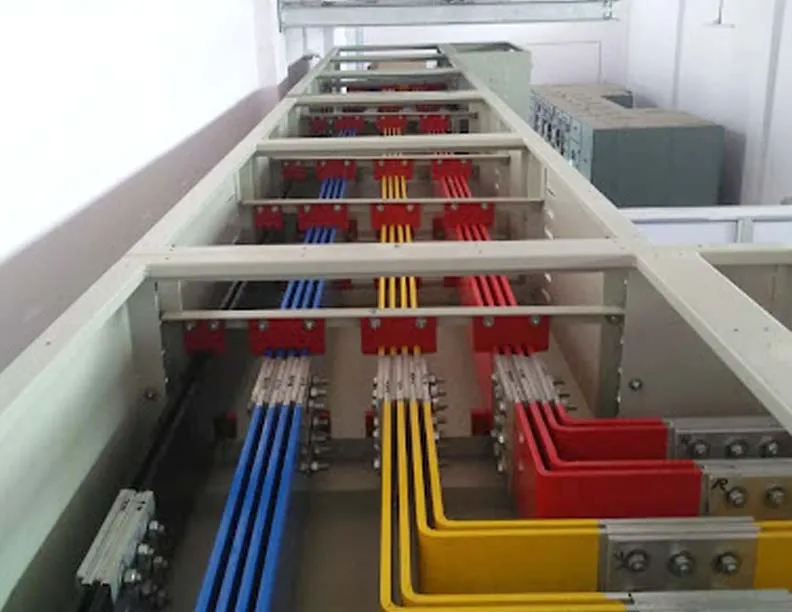A Bus Duct (also known as busway) is an electrical distribution system used for the transmission of high currents within industrial or commercial buildings. It consists of a metal enclosure containing copper or aluminum busbars, which carry electrical power. Bus ducts are typically used in environments where large amounts of power need to be transmitted over short distances with minimal voltage drop.
Key Components of a Bus Duct:
- Busbars: Conductive bars made of copper or aluminum that carry electrical power.
- Enclosure: A protective metal casing, typically made of steel or aluminum, that houses the busbars and protects them from external damage.
- Insulation: Insulating materials used to prevent electrical leakage and ensure safety.
- Tap-off Units: Allow connection of power to electrical loads at different points along the bus duct.
Features of Bus Ducts:
- Compact Design: Space-saving compared to traditional cable systems.
- High Current Capacity: Capable of transmitting large amounts of power efficiently.
- Modular Construction: Easily expandable for future power distribution needs.
- Reduced Voltage Drop: Provides efficient power transmission with minimal losses.
- Safety: Enclosed design protects against electrical hazards and environmental damage.

A Bus Duct (also known as busway) is an electrical distribution system used for the transmission of high currents within industrial or commercial buildings. It consists of a metal enclosure containing copper or aluminum busbars, which carry electrical power. Bus ducts are typically used in environments where large amounts of power need to be transmitted over short distances with minimal voltage drop.
Key Components of a Bus Duct:
- Busbars: Conductive bars made of copper or aluminum that carry electrical power.
- Enclosure: A protective metal casing, typically made of steel or aluminum, that houses the busbars and protects them from external damage.
- Insulation: Insulating materials used to prevent electrical leakage and ensure safety.
- Tap-off Units: Allow connection of power to electrical loads at different points along the bus duct.
Features of Bus Ducts:
- Compact Design: Space-saving compared to traditional cable systems.
- High Current Capacity: Capable of transmitting large amounts of power efficiently.
- Modular Construction: Easily expandable for future power distribution needs.
- Reduced Voltage Drop: Provides efficient power transmission with minimal losses.
- Safety: Enclosed design protects against electrical hazards and environmental damage.
